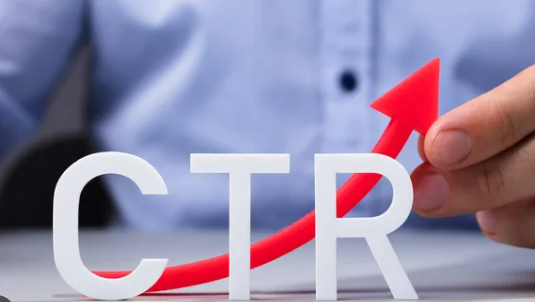Boosting CTR in SERPs: Top Methods for Higher Engagement

Boosting CTR in SERPs: Top Methods for Higher Engagement
Increasing Click-Through Rate (CTR) in Search Engine Results Pages (SERPs) has become a significant goal for marketers and SEO experts. CTR measures how often people click on a link after seeing it in search results, and a high CTR can not only drive more traffic but may also signal to Google that your page is relevant and valuable, impacting your ranking.
In this article, we’ll explore several effective ways to boost CTR, including creative methods like YouTube videos, as well as discuss the use of CTR manipulation tools and bots.
Using YouTube to Increase CTR in Google Searches
One effective, somewhat unconventional method for increasing CTR in SERPs is by leveraging YouTube videos. Video marketing has immense power to drive engagement, and incorporating your brand into YouTube content can significantly boost your SERP presence. Here’s how it works:
- Create engaging YouTube content that subtly encourages viewers to look up your brand or specific content on Google. For instance, you can mention your brand’s latest blog post or a new service, and then prompt viewers to search for it on Google.
- Build curiosity and urgency within the video, asking viewers to find your brand or product on Google. This approach not only directs more traffic to your page but also indicates brand relevance when users actively seek it out. Over time, this technique can increase your CTR as Google recognizes this pattern of engagement.
- Utilize YouTube’s ranking strength to rank your video on Google for brand keywords. Since YouTube videos often perform well in Google’s SERP, your video can act as a gateway to encourage clicks on your main website links.
Optimizing Title Tags and Meta Descriptions
Optimizing your title tags and meta descriptions remains one of the most effective and straightforward ways to boost CTR. Although simple, these elements play a key role in influencing whether a user clicks on your page:
- Use action-oriented language: Verbs and direct phrases like “discover,” “learn more,” or “find out” can entice users to click.
- Incorporate keywords naturally: Including keywords in titles and descriptions that users are likely to search for can make your result more relevant and attractive.
- Add emotional triggers: Phrases that play on emotions like “easy,” “surprising,” or “important” can make users more curious and likely to click on your link.
Optimized titles and descriptions that stand out in the SERP can improve CTR and signal to Google that your content is appealing and relevant to users.
Using Structured Data and Rich Snippets
Structured data and rich snippets enhance your search result’s appearance, making it more engaging and informative for users. By adding schema markup, you can allow Google to display additional details like product ratings, reviews, FAQs, or images, making your link more appealing:
- Product ratings and reviews: If you run an e-commerce site, showing star ratings and reviews in SERPs can boost CTR as users are drawn to positive feedback.
- FAQ schema: This allows a short Q&A section to appear under your link, giving users a quick preview of the content and increasing the chance of them clicking through.
- Event or product information: Providing details on upcoming events or new products can encourage users to click on links with this rich data.
Rich snippets can create an appealing SERP entry, giving users a reason to choose your link over others.
Leveraging Social Media and Influencers
Promoting your brand and website on social media platforms and through influencers can indirectly increase CTR in SERPs. Here’s how:
- Social engagement drives brand searches: The more users hear about your brand on social media, the more they’ll be likely to search for it on Google, ultimately boosting CTR.
- Influencers can also encourage their audiences to look up your brand on search engines, helping increase both awareness and CTR. A call-to-action (CTA) from a trusted influencer to search for your brand can generate more organic clicks.
CTR Manipulation Tools and Bots: What Are They?
CTR manipulation refers to techniques used to artificially boost the click-through rate (CTR) of a webpage in search engine results. Click-through rate is a measure of how often users click on a link after seeing it in the SERPs, and it can signal relevance to search engines, potentially improving rankings. You can read in detail what is it here.
CTR manipulation tools and bots represent a more controversial method of increasing CTR. While these tools can simulate human behavior and artificially inflate your click-through rate, they’re not typically recommended for long-term growth, as they risk penalization. However, understanding these tools and their mechanisms can be useful:
- CTR manipulation bots: These bots simulate human interactions by mimicking clicks on your website from various locations. They’re programmed to conduct searches for your keywords and click on your link, artificially increasing CTR.
- Engagement tools: Some platforms offer CTR manipulation services by engaging with your site in a more human-like manner. They simulate behaviors like scrolling, clicking links within the page, and even spending time on-site, which could signal relevance to Google.
While these methods can temporarily boost CTR, Google’s algorithms are constantly evolving to detect manipulation. Relying solely on these tools can lead to penalties or a drop in rankings if Google identifies the activity as artificial.
The Power of Organic CTR Strategies
While there are many strategies to increase CTR, organic methods like optimizing titles, creating engaging content, and leveraging social proof remain the most effective and sustainable. By understanding your audience, experimenting with video prompts, and optimizing SERP elements, you can enhance your visibility in search results and drive real, meaningful engagement.
In conclusion, increasing CTR in SERPs is both an art and a science. With a balanced approach that combines creative strategies, optimization techniques, and an understanding of CTR manipulation risks, you can effectively drive more users to click on your site while staying compliant with search engine guidelines.